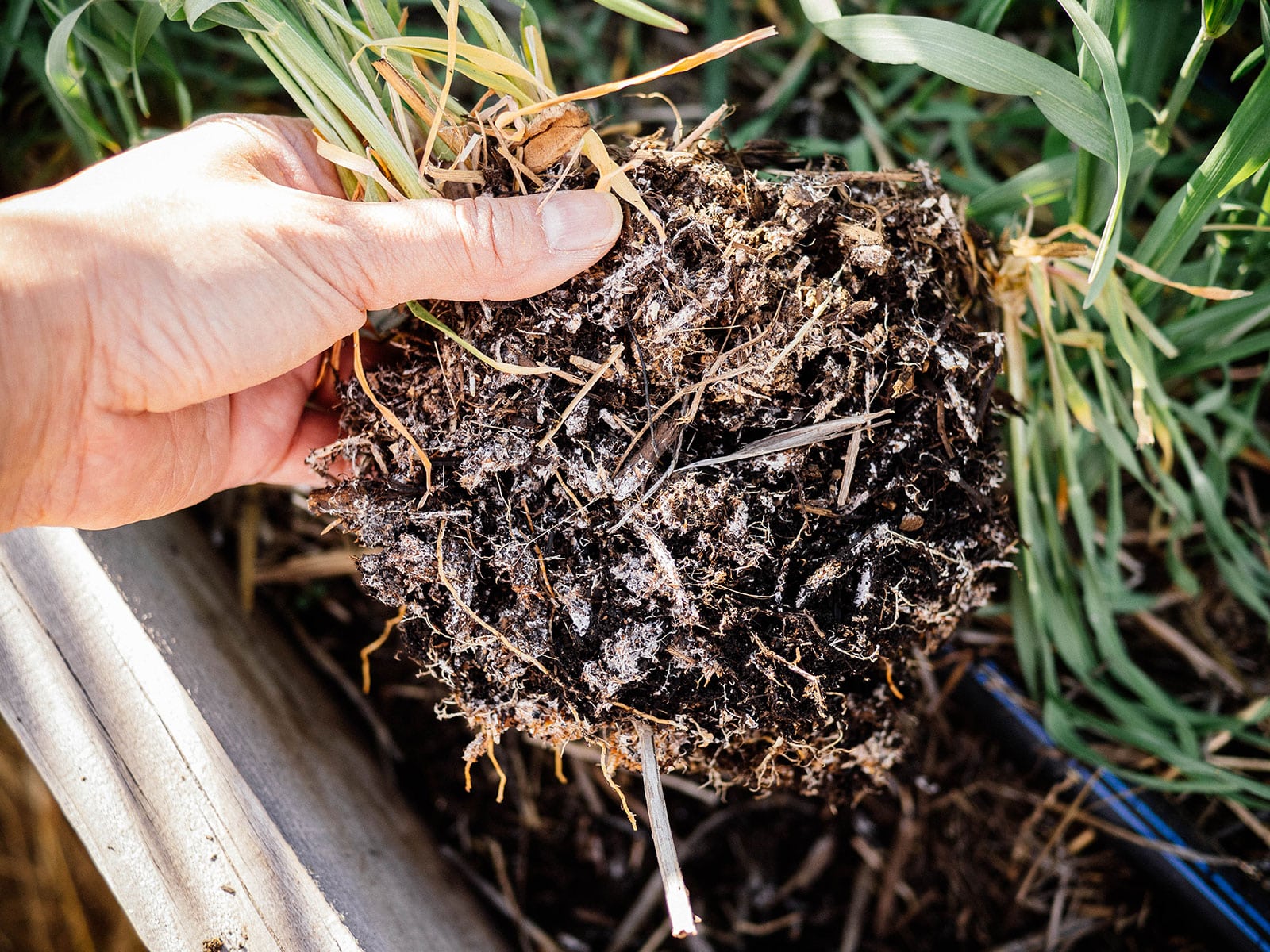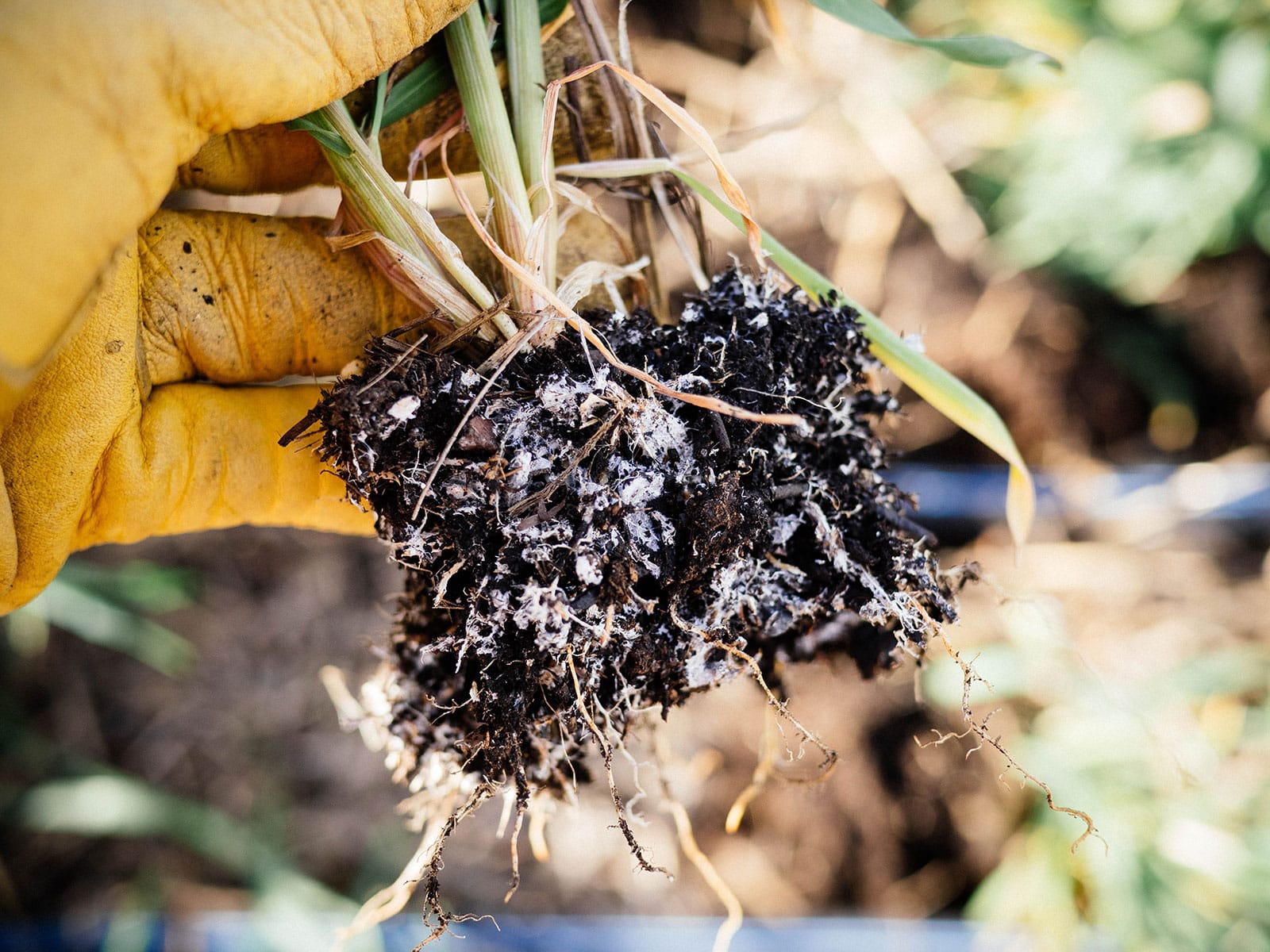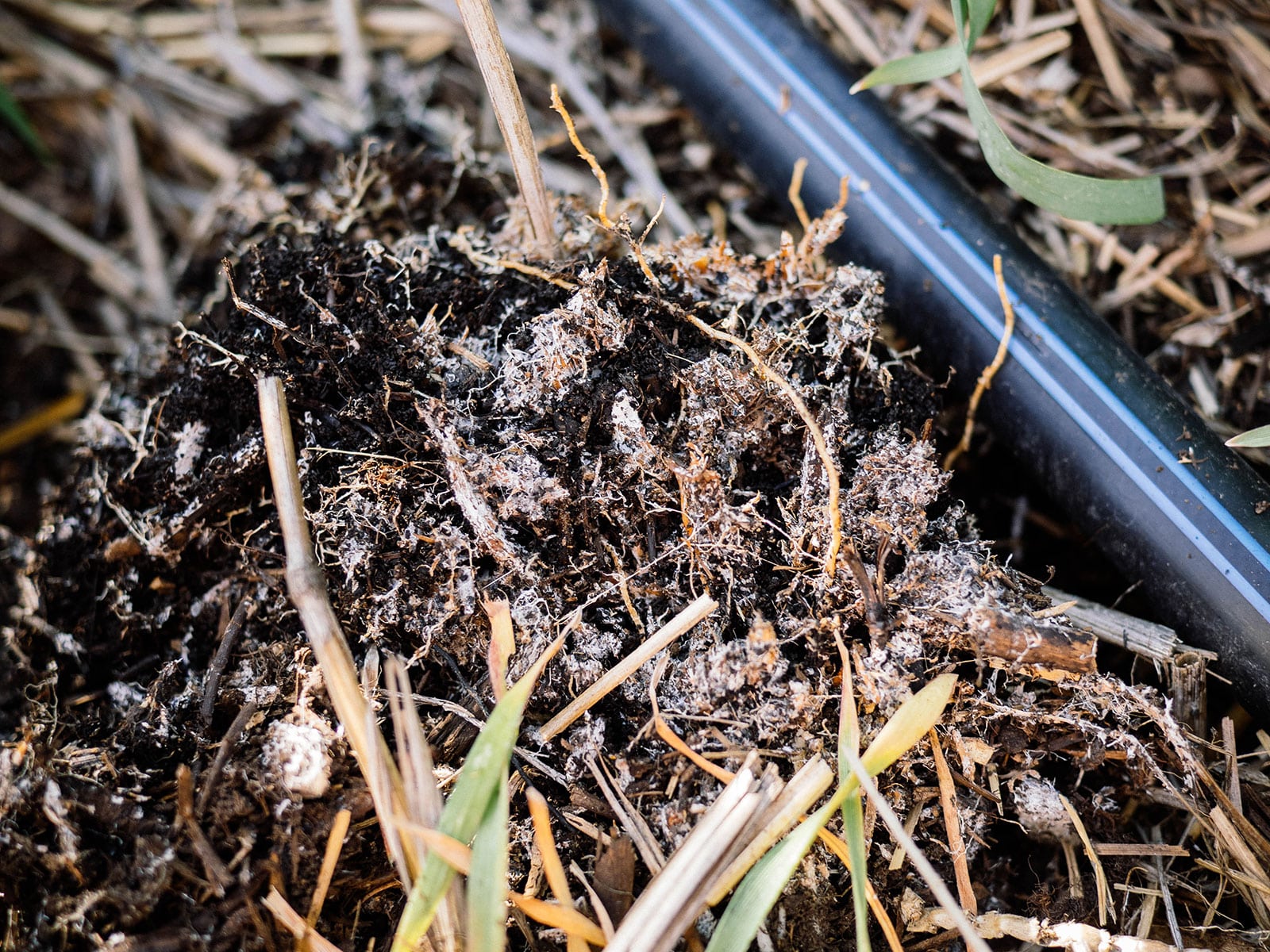The other day I was pulling up some Egyptian walking onions in a free-for-all garden bed where I’d let all sorts of plants overwinter and grow (maybe a bit too) enthusiastically through spring. While I was digging around, I came across several clumps of “white mold” growing all over my soil and clinging to the roots of the plants.
And while the very idea of “mold” is usually cause for concern, in this case, it’s an amazing thing to find in the garden! Yes, there’s a fungus among us!

That white mold is actually mycorrhizal fungi, and it’s a sign of very healthy, active soil.
The word mycorrhiza literally means “fungus root,” and there are several thousand different species of mycorrhizal fungi that have been around for hundreds of millions of years.
Think of mycorrhizae as underground mushrooms that appear as fibrous white strands (much thinner than human hair). In the soil, these strands naturally infect the roots of their host plant, thereby forming a mutually beneficial (symbiotic) relationship. (If you’ve read my post about how rhizobia bacteria works with legumes, this is the same idea.)
How it works: The fungi pull up water and nutrients that would otherwise be unavailable to your plants, and in turn, your plants provide the fungi with needed sugars and carbon that are produced through photosynthesis.
You see, some plant nutrients move verrrrry slowly in the soil. This sluggish movement shows up as a deficiency in the plant—for example, phosphorus, which is mostly insoluble. This makes it unavailable to plant roots, and that’s where mycorrhizae come in.
The fungi can convert soil nutrients into a more soluble form and deliver them to the plants’ root system, causing more branching and improving the roots’ ability to store water and nutrients.
In a nutshell: Mycorrhizae depend on plants for food, and plant development is greatly improved by mycorrhizae.
You can see in the image below how the mycorrhizae are concentrated around the roots of my winter rye (which I grew as a cover crop).

Turns out, rye is a superb host for mycorrhizal fungi, as are many of the crops we like to grow: tomatoes, cucumbers, squash, beans, peas, peppers, onions, garlic, corn, carrots, asparagus, lettuce, artichokes, basil, strawberries, sunflowers, nasturtiums, and marigolds, to name a few.
Over 85 percent of plants have symbiotic relationships with mycorrhizae (with notable exceptions being blueberries, spinach, beets, and the brassica family). Mycorrhizae are not exclusive to just one plant, either. The strands can overlap and create a sharing web of water and nutrients throughout your garden.
That means mycorrhizal fungi can move between plants in a raised bed, or between a shrub and a tree in the ground, or from annual to perennial in a garden. If you grow organically and holistically, you could have an entire network of these root-like strands growing bigger and bigger every year, and not even know it!

Mycorrhiza is naturally present in most soils but certain things can and do harm the population. So, how can you support its growth?
- Avoid the use of pesticides and fungicides (including using neem oil as a soil drench).
- Avoid tilling or compacting the soil, which breaks up beneficial soil structure.
- Don’t overfertilize. (This study has found that high levels of nitrogen and phosphorus fertilizers can actually decrease mycorrhizal association.)
- Grow a cover crop in the off season, or when you don’t have plans for a bed. (My favorites are a winter-hardy cover crop like Austrian winter peas and a nitrogen-fixing cover crop like fava beans, which give you delicious bonus harvests year-round. I have more suggestions for easy-to-grow edible cover crops in this post.)
- Grow anything, as mycorrhizae need a root system to thrive. That means you should keep some plants growing in your garden over winter, especially those with extensive root systems. Strawberries, garlic, onions, chives, and other perennial herbs and perennial vegetables are all good choices for overwintering. If you live in a mild climate, you can keep many more plants going all winter.
The good news is, you can always “start over” and rebuild the mycorrhizal network by using special inoculants or soil amendments that contain them.
Could or should you inoculate your soil with mycorrhizal fungi to give it a boost?
Sure. In some instances—like if you started a raised bed and filled it with commercial soil, or if you built a brand-new garden over an area that used to be concrete—inoculation can help give your garden a solid start.
But there’s probably no need to continually add mycorrhizae, so long as you provide healthy soil for them to thrive in.
Disclosure: If you shop from my article or make a purchase through one of my links, I may receive commissions on some of the products I recommend.
Where to buy
















Hello. My sold underground is white and powdery and if I step on it I sink down. I can literally stick a stake right in and it’s like butter. Would is collapsing. Every heard of that??
Can mycorrhizae be used on established lawns? If so, how is it applied? Have used in garden with great success, thank you! Although you say it’s not necessary to use it all the time, I have read to use it every 2-3 weeks?
You absolutely can! Mycorrhizae can help turfgrass withstand drought better and also leads to less compaction. I recommend applying mycorrhizae after you aerate your lawn. You can mix it into compost for easier spreading, and then spread an inch of that compost over the whole area.